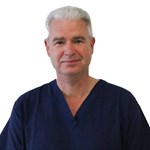Contact us about treatment for chronic middle ear disease
It's easy to find out more about treatment by giving us a call or completing our enquiry form.
There are a range of treatment options for chronic middle ear disease depending on the underlying cause, the severity of the symptoms, and your age.
The commonest cause of blocked ears is usually an issue in the outer ear, due to wax accumulating and blocking the ear canal. If left to accumulate and block the ear canal, it can cause problems with hearing and an infection in the outer ear causing swelling, pain and discharge.
Consultant ENT Surgeon, Mr Henry Sharp, discusses our self-pay ear treatments in this short video.
So, in the clinic, what do we do? Well, we can do microscopy of the ear here and now. We sit you down, we have a microscope in the clinic. We can look in your ear, clean out any debris, clean out any infection, and look at your eardrum. Here is another patient having that exact procedure, which is very quick and easy. The little thing I'm holding in my right hand is a tiny hoover device. It's called micro suction. Using the microscope, we can also, as I've mentioned, perform an audiogram.
We have a dedicated, very skilled audiometrist here who can perform a hearing test for you while you wait. Then you have the combination of my consultation and also a hearing test here and there, which I can tell you the result of straight away. This is the sort of setup that we would do for someone with ear problems in the clinic when we see them.

Consultant ENT Surgeon
Mr Balfour's specialties include thyroid surgery, head and neck surgery and rhinology.

Consultant ENT Surgeon
Mr Dhar is a specialist ENT Consultant at Benenden Hospital

Consultant ENT Surgeon
Mr Fu is a qualified Rhinologist with a special interest in nasal and sinus conditions. His specialities include otolaryngology and rhinology.

Consultant ENT Surgeon
Mr Hickson's clinical interests include balance, middle ear disease, tumours of the throat, and surgical methods.

Consultant ENT Surgeon
Mr Sharp's specialties include rhinology and non-cosmetic nasal plastic surgery.
It's easy to find out more about treatment by giving us a call or completing our enquiry form.